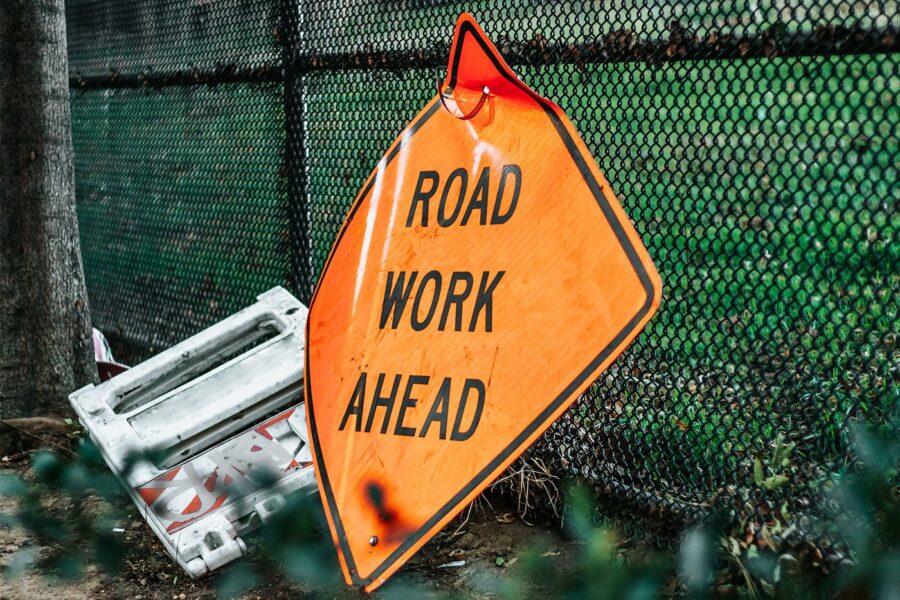
Hamilton’s long history with road works projects
- Julia Kollek
- 13 Jul 2019
If it’s not winter, then it must be construction season. From traffic accidents, to their environmental impact and noise, roads pose a contentious issue. Whether you drive, cycle, rollerblade or walk, roads and sidewalks are part of our infrastructure, and from the early days of transportation, maintaining them has been a necessity.
Canada’s first highways were of course, the rivers and lakes used by Indigenous people, and Governor’s Road – the first one to be built in what was then Upper Canada – also followed an Indigenous route.
Military necessity prompted the start of its construction in 1793, and as the original path went through dense forest and swamps, early settlers and soldiers were tasked to clear the way. If you think going over a pothole is uncomfortable, imagine bumping over a ‘corduroy surface’ — a pathway made from whole trees, laid side by side, with an occasional swamp or quagmire to navigate.
The first road maintenance workers were local settlers: they were legally required to keep roads next to their property in good shape or to work three to 12 days each year to maintain them. Over time, payment displaced this labour system and the money raised became the first fund to cover the cost of road maintenance.
The lay of the land made a difference early on, too. Roads across the Head-of-the-Lake — Hamilton’s name before it became a town in 1812 — kept to level ground, and the boggy northern parts of town areas were avoided.
All that changed when shipping and the railways arrived: you took what was known as Lake Road (later James Street North) to get to the harbour. Roads in outlying areas expanded with time, their shape dictated by where people needed to get to rather than design.
Street names were very simple in the early days, which is why our city’s most prominent thoroughfare was just called Main Street. And because the British Crown granted farm lots to United Empire Loyalists who fled the revolutionary war in the States, some Hamilton roads, like Aikman, Gage, and Land, are named after them.
For a fascinating read, delve into “Hamilton Street Names” and their stories in a book compiled by the late historian Margaret Houghton.
Fast forward to 1914, when work began on the 40-mile (64km) long Hamilton-Toronto Highway. It would become one of Canada’s first concrete roads, and it opened with an estimated cost of $33,000 per mile (just over $20,000 per km). That’s almost $1 million in today’s money.
In case you’re curious, the City of Hamilton’s budget for our Roads Program this year is $75.8 million (about half of the $156.85 million set aside for Police Services).
An unseen and different cost is borne at the local level. Neighbourhoods around Locke Street South, for instance, have been undergoing what feels like continual phases of upheaval for months now — even through the winter. No fun for the workers for sure, and with the road down to soil level since the spring, local businesses have felt the pinch, some closing their doors altogether.
There’s more to road repair, of course, than waking to the early morning of huge machinery beeping, or earth pounding that shakes the walls of nearby homes. Aging sewer lines are replaced or lined, uneven sidewalks updated, benches installed, and the promise of trees to be planted.
But till then, it’s sweaty, heavy, dirty work — and yes, most of it must be done in the summer. Excavation gets complicated in colder weather as water lines are more likely to get damaged and asphalt won’t set.
Road repairs take more than a village of muscle and co-ordination. Teams of city inspectors, for instance, stay on-site to check that the contractor is using the correct materials, the scope of work is being carried out, and that safety measures are being followed. Not to mention directing pedestrians through a maze of closed sidewalks.
But in the thick of it all, a silver lining does shine through. If you ask residents for an upside to closing their road to traffic, you’ll hear that once construction is done for the day, it’s nice and quiet without the cars going past.
Which is pretty ironic when you think about it.
Comments 0
There are no comments


Add comment